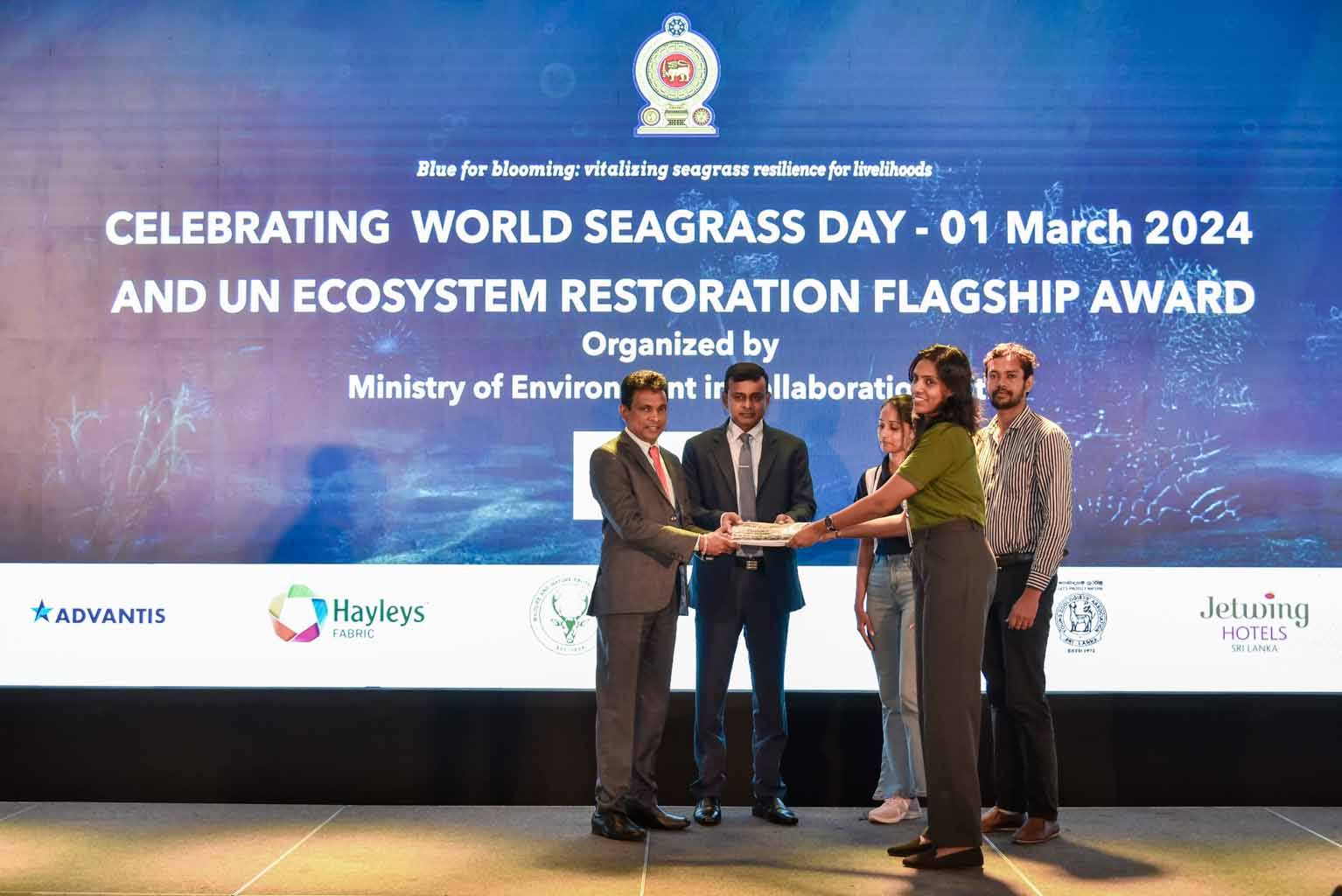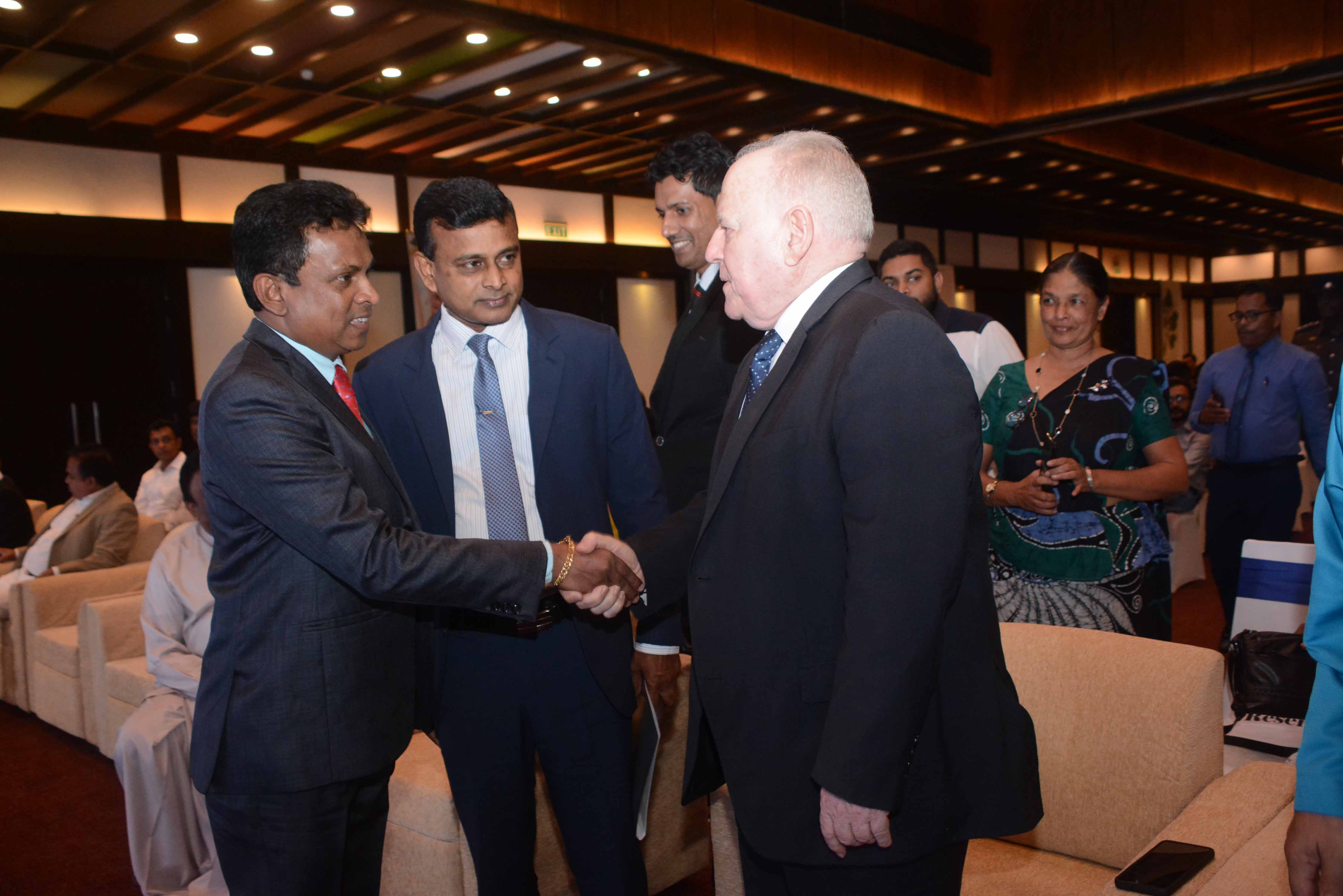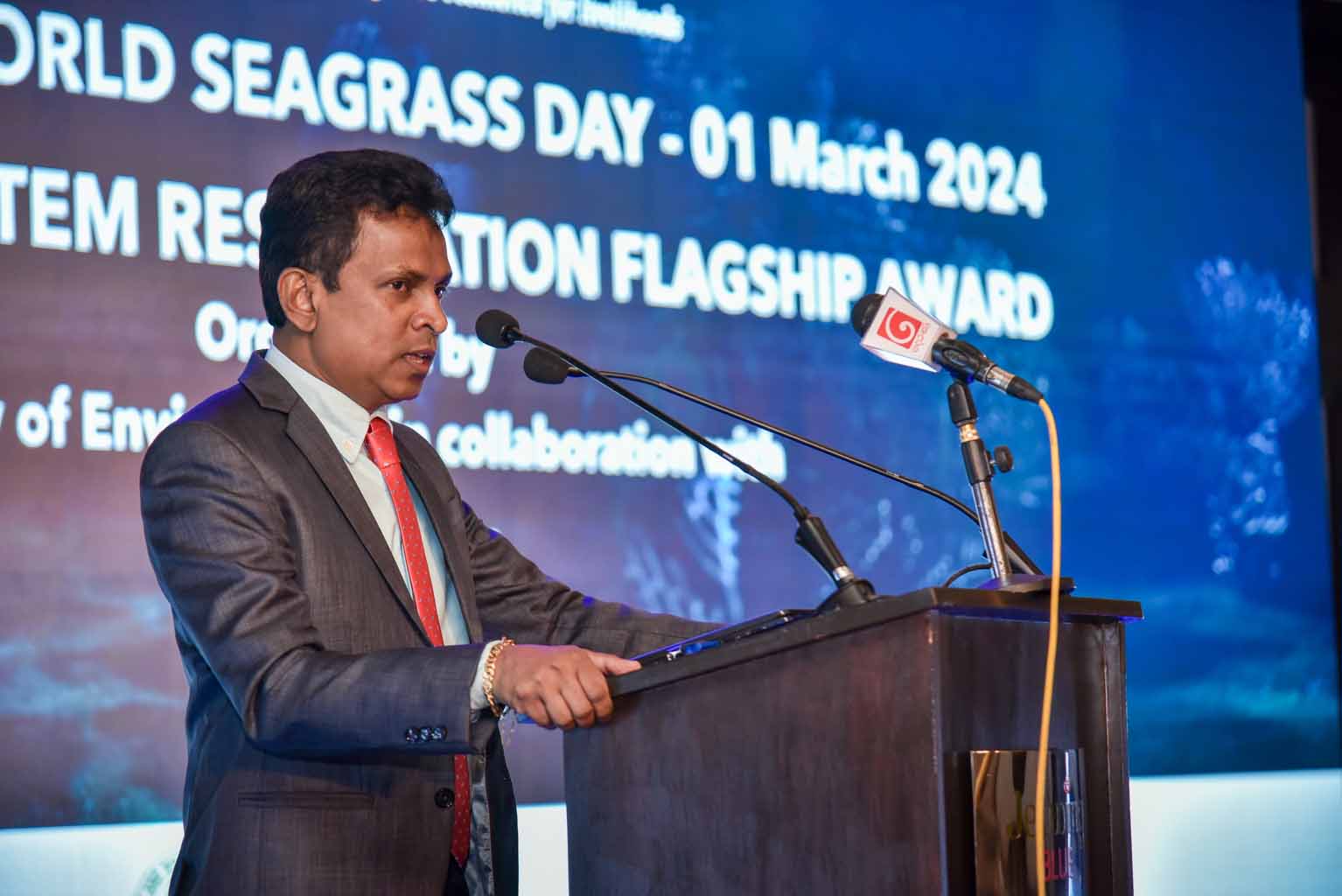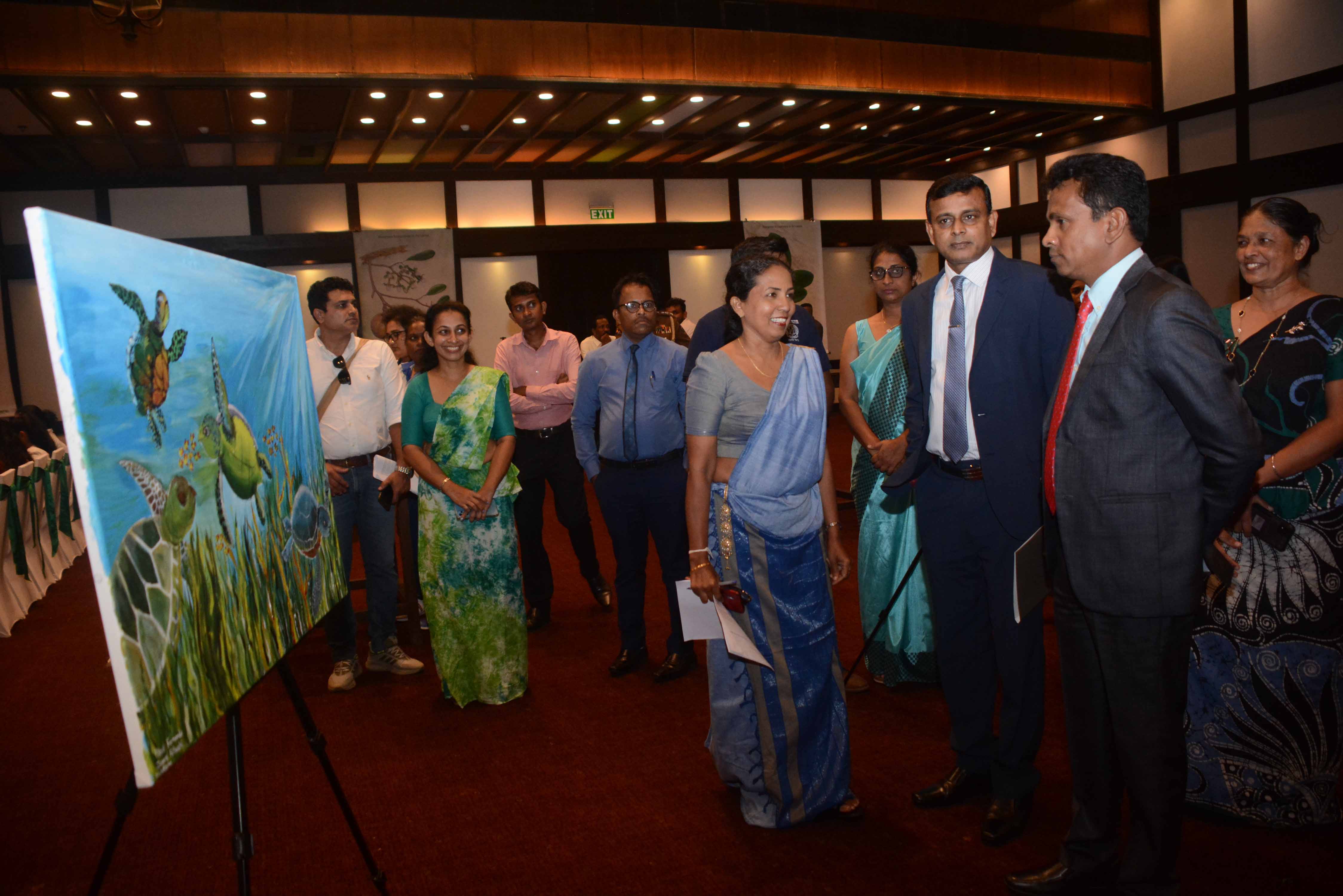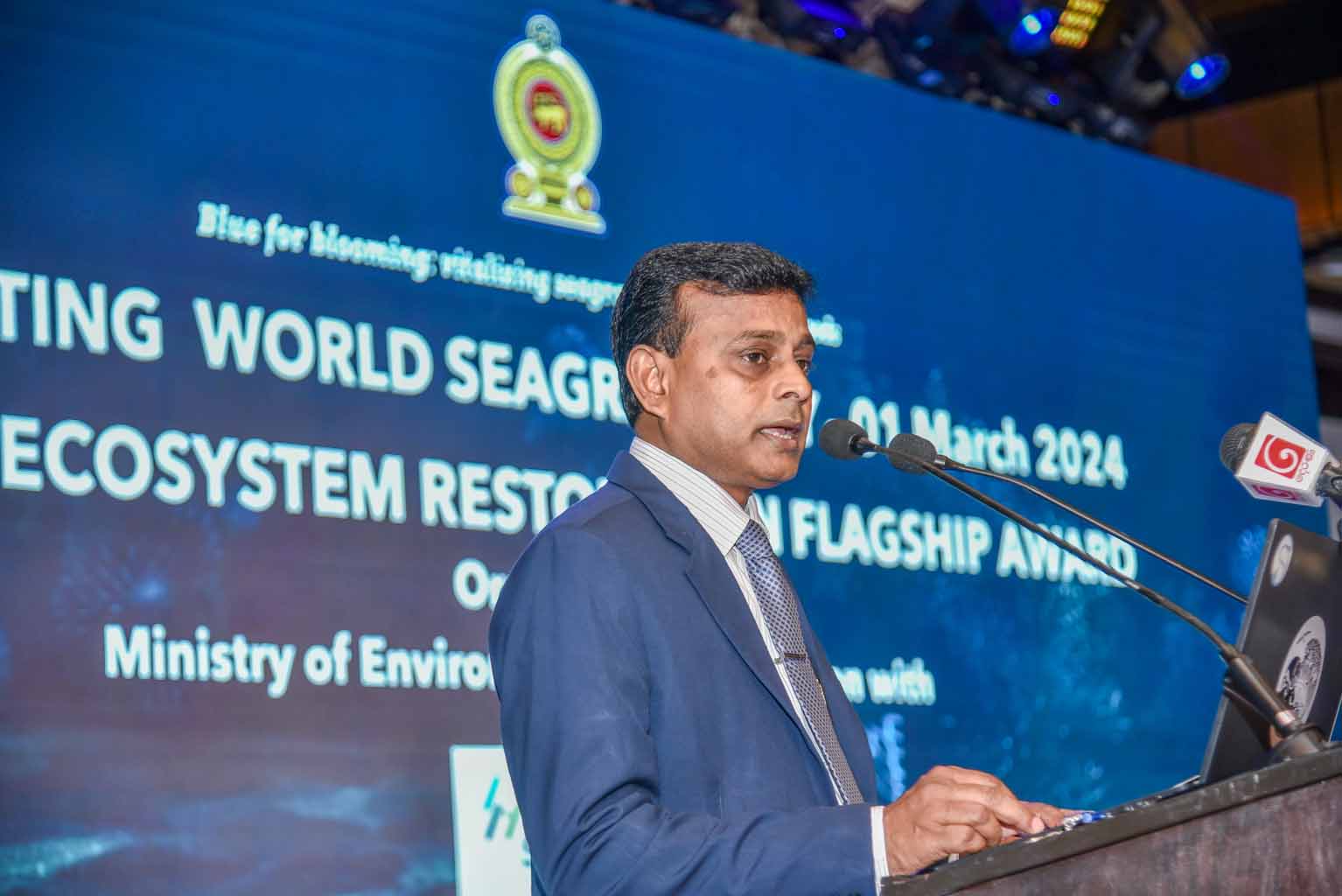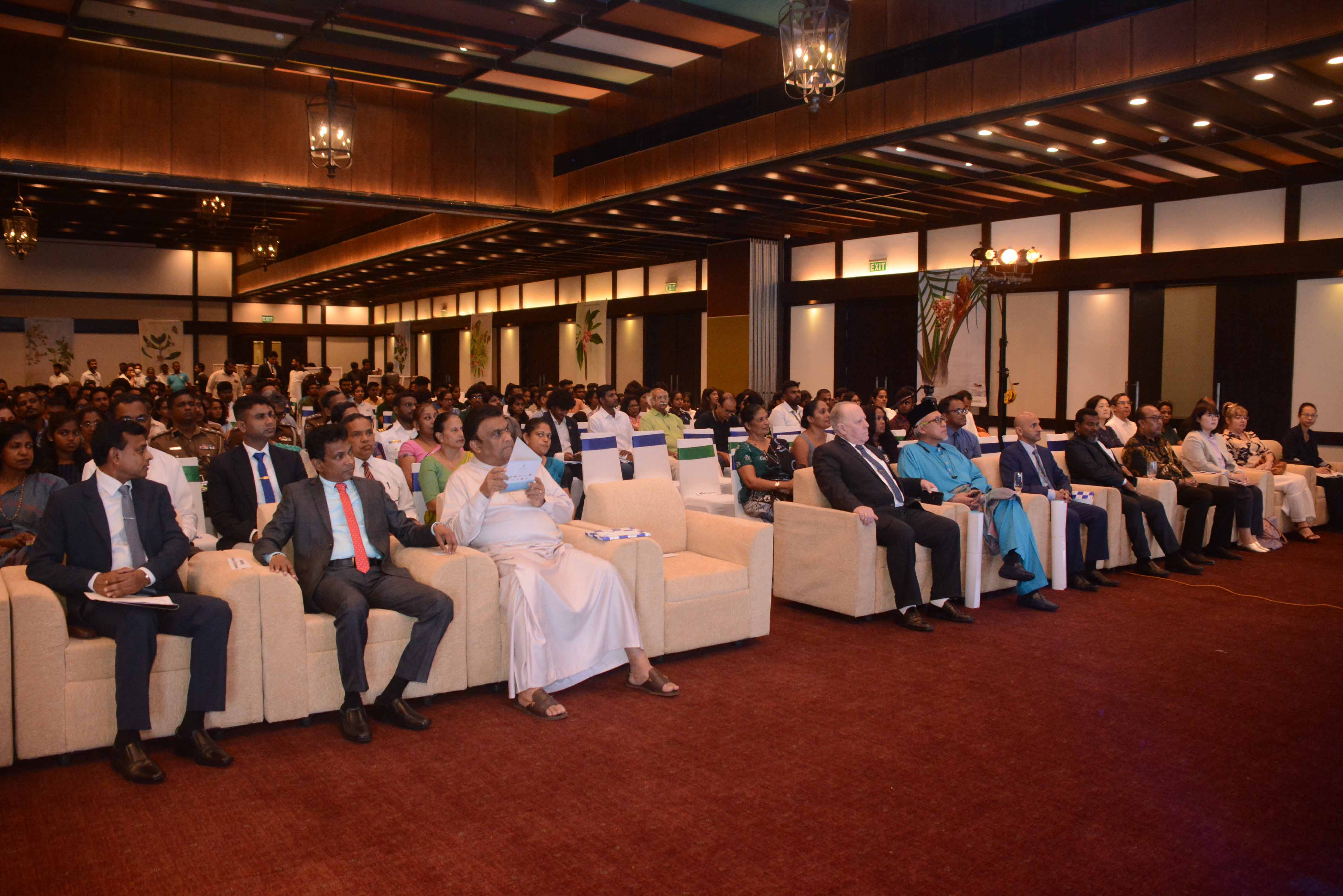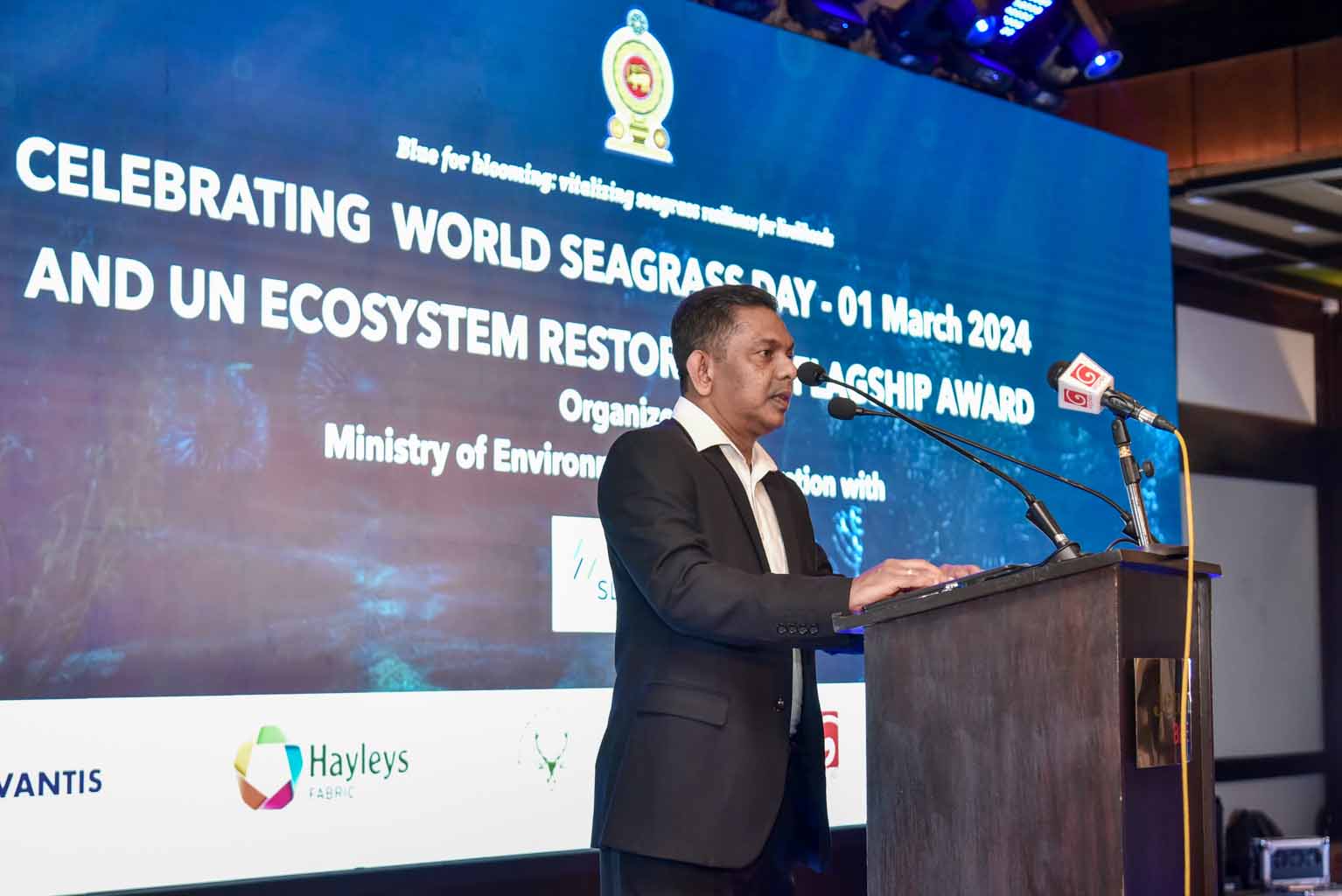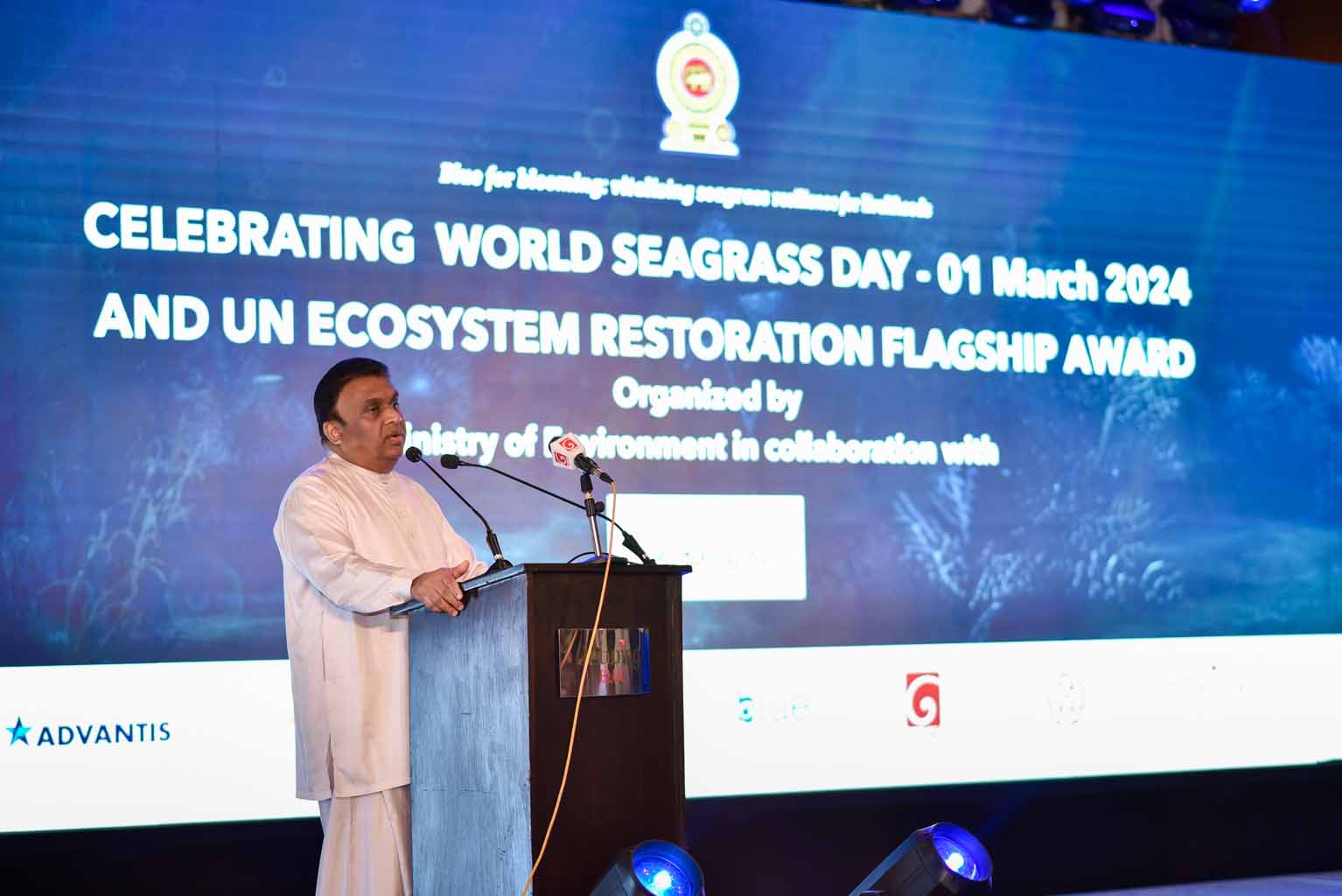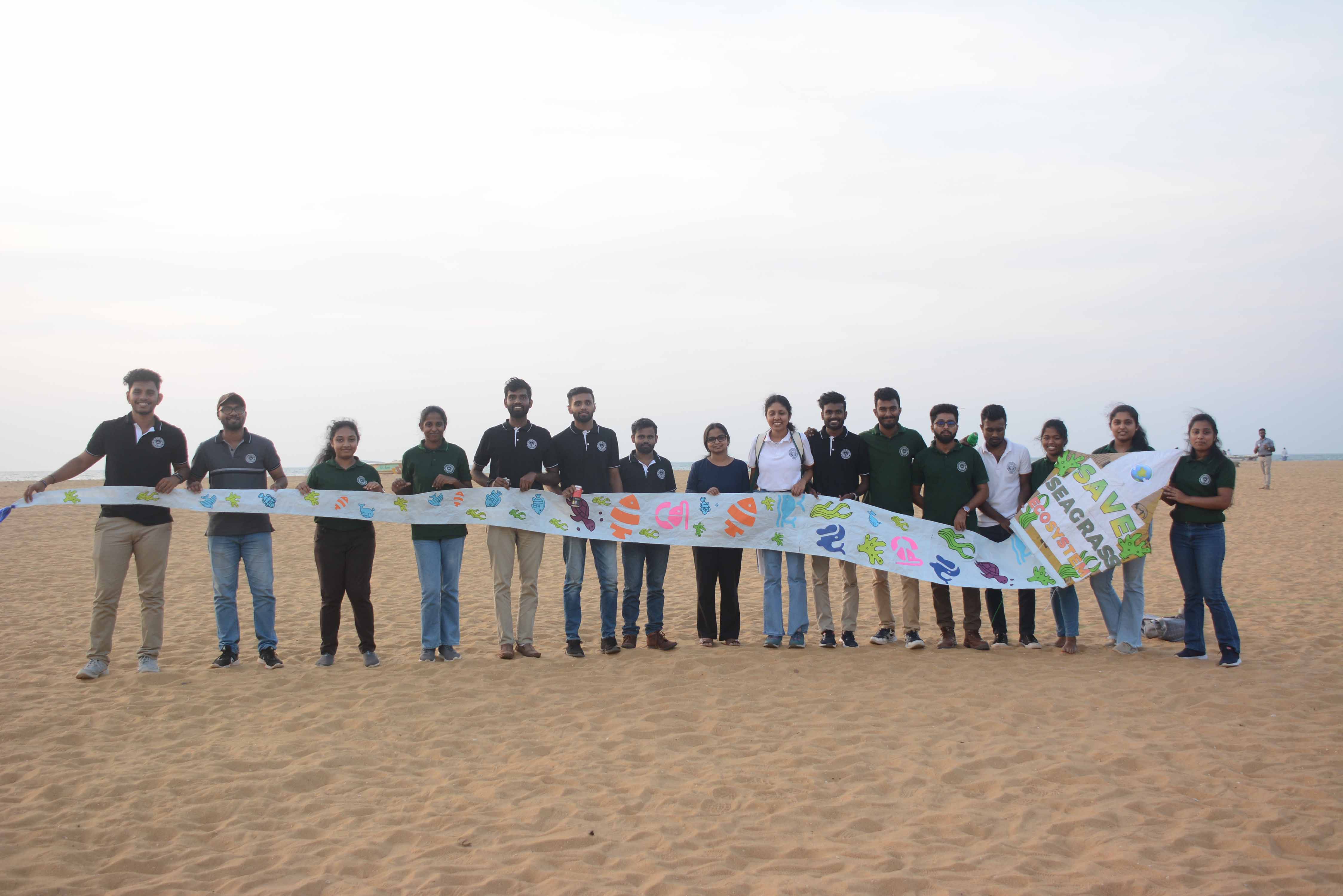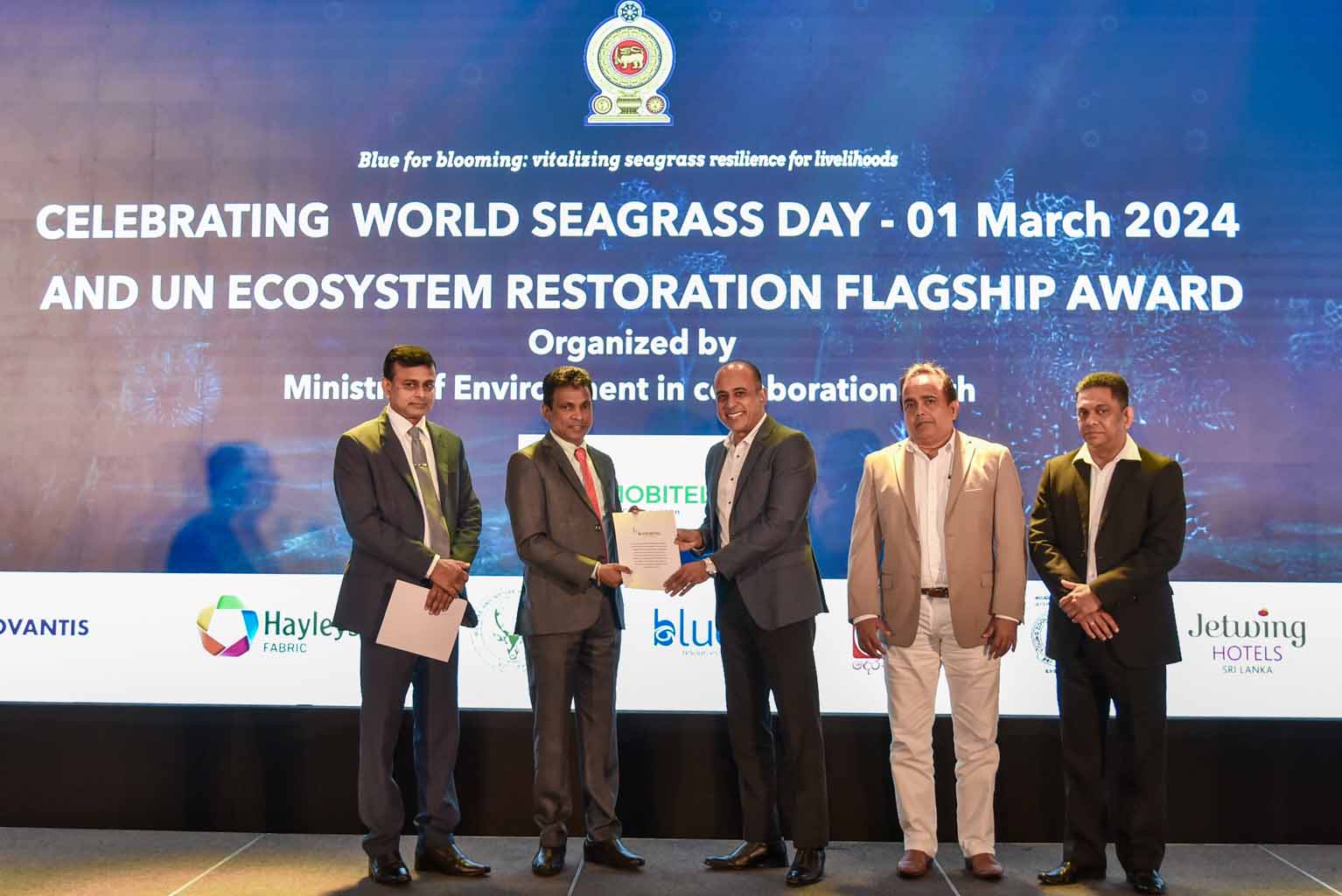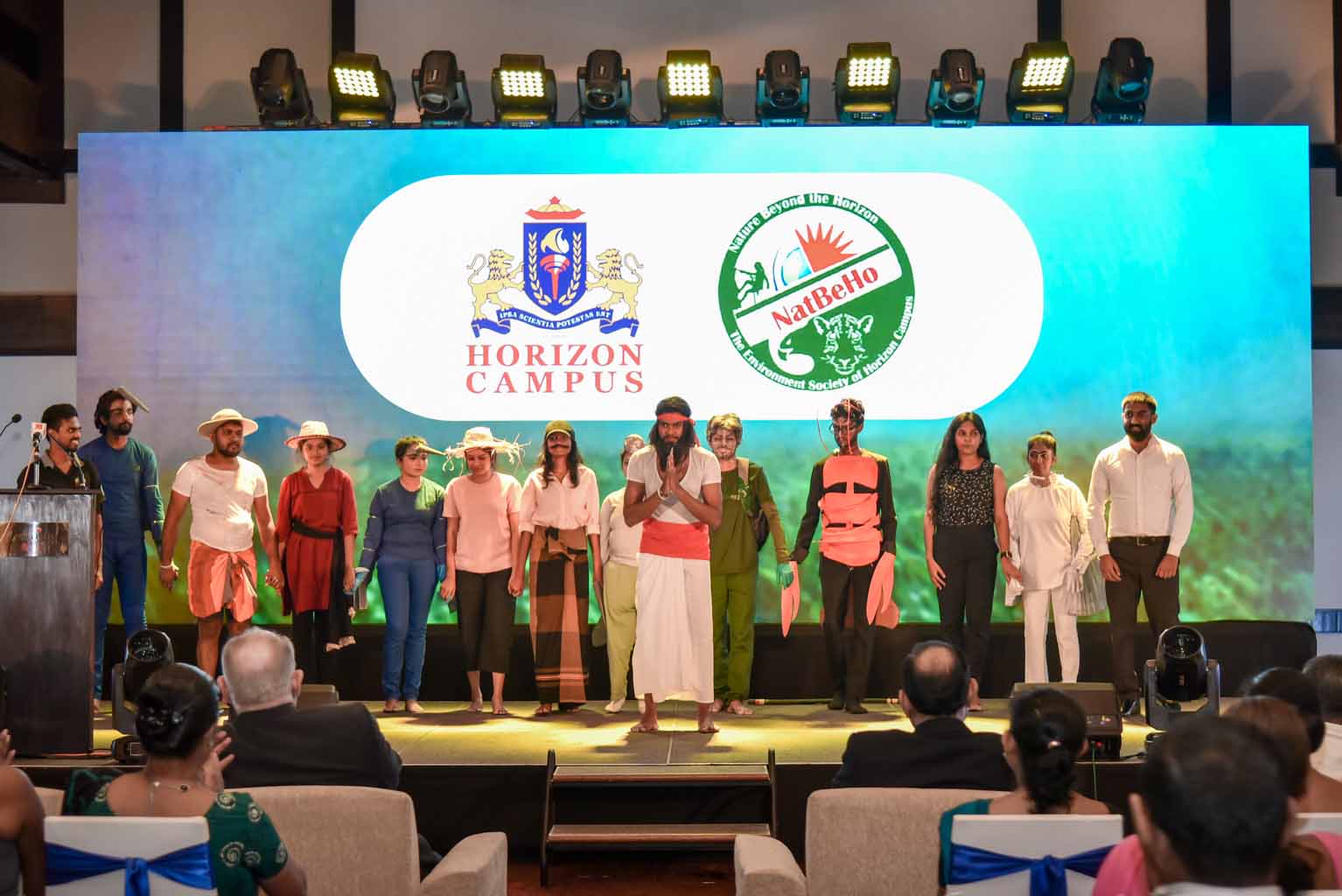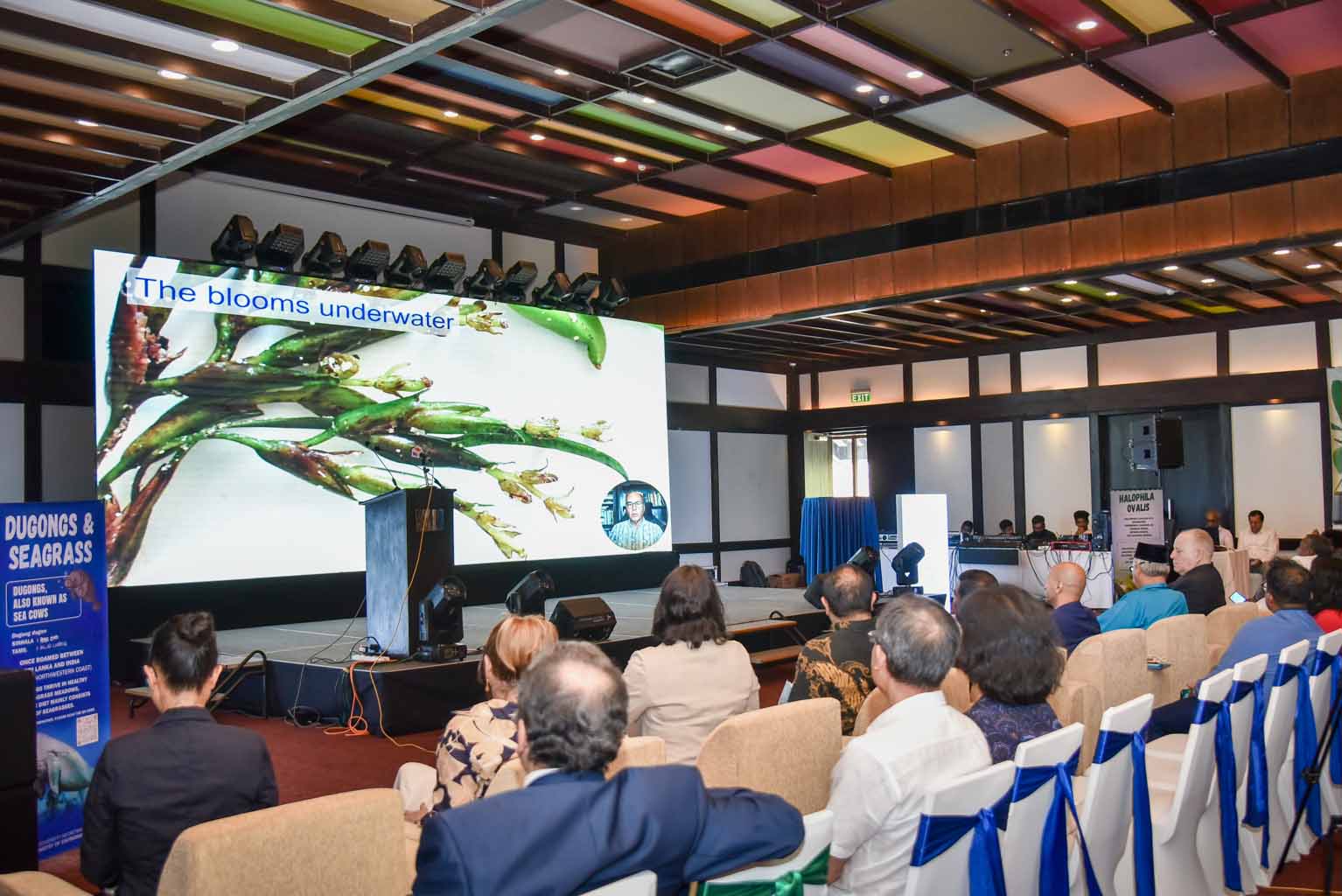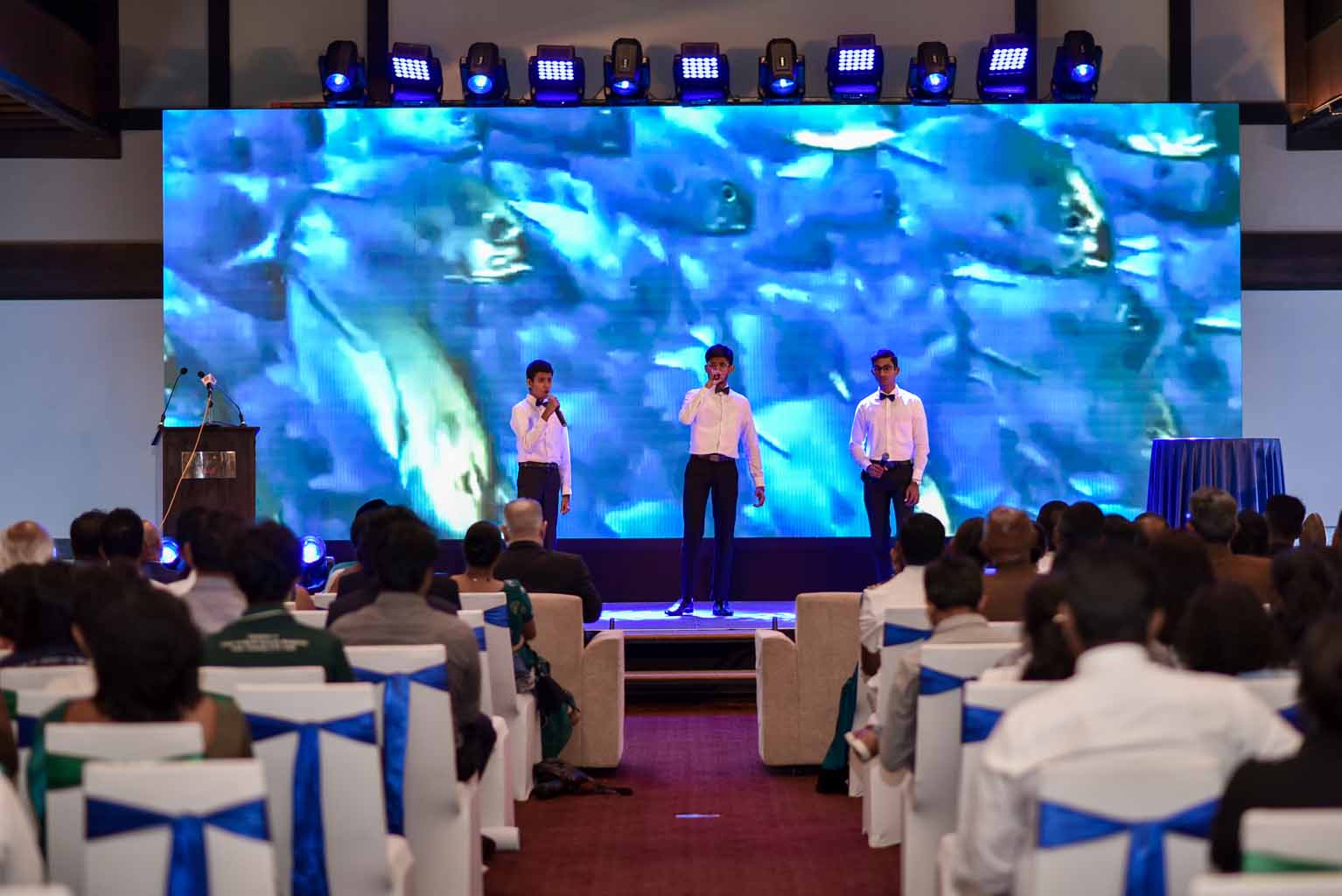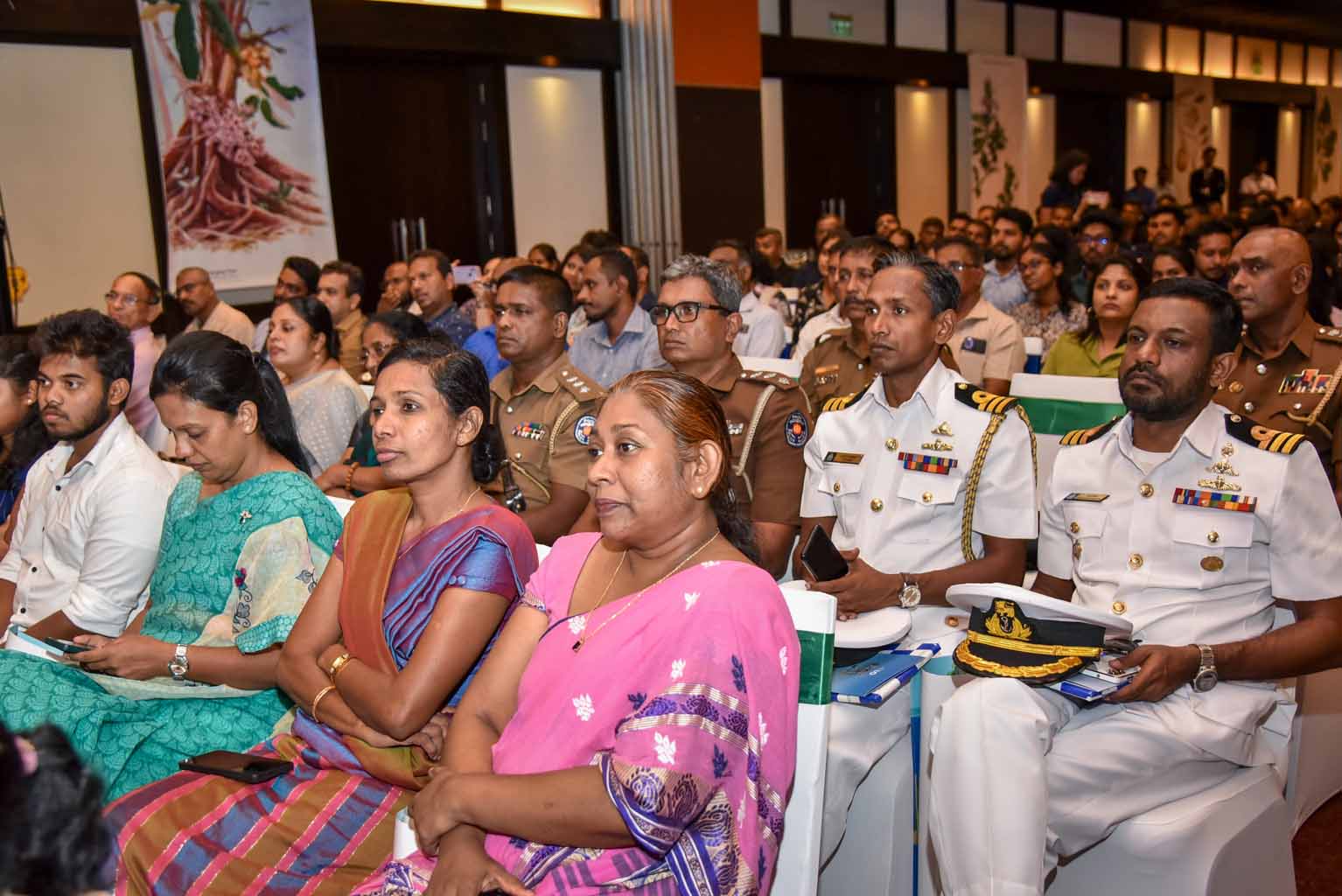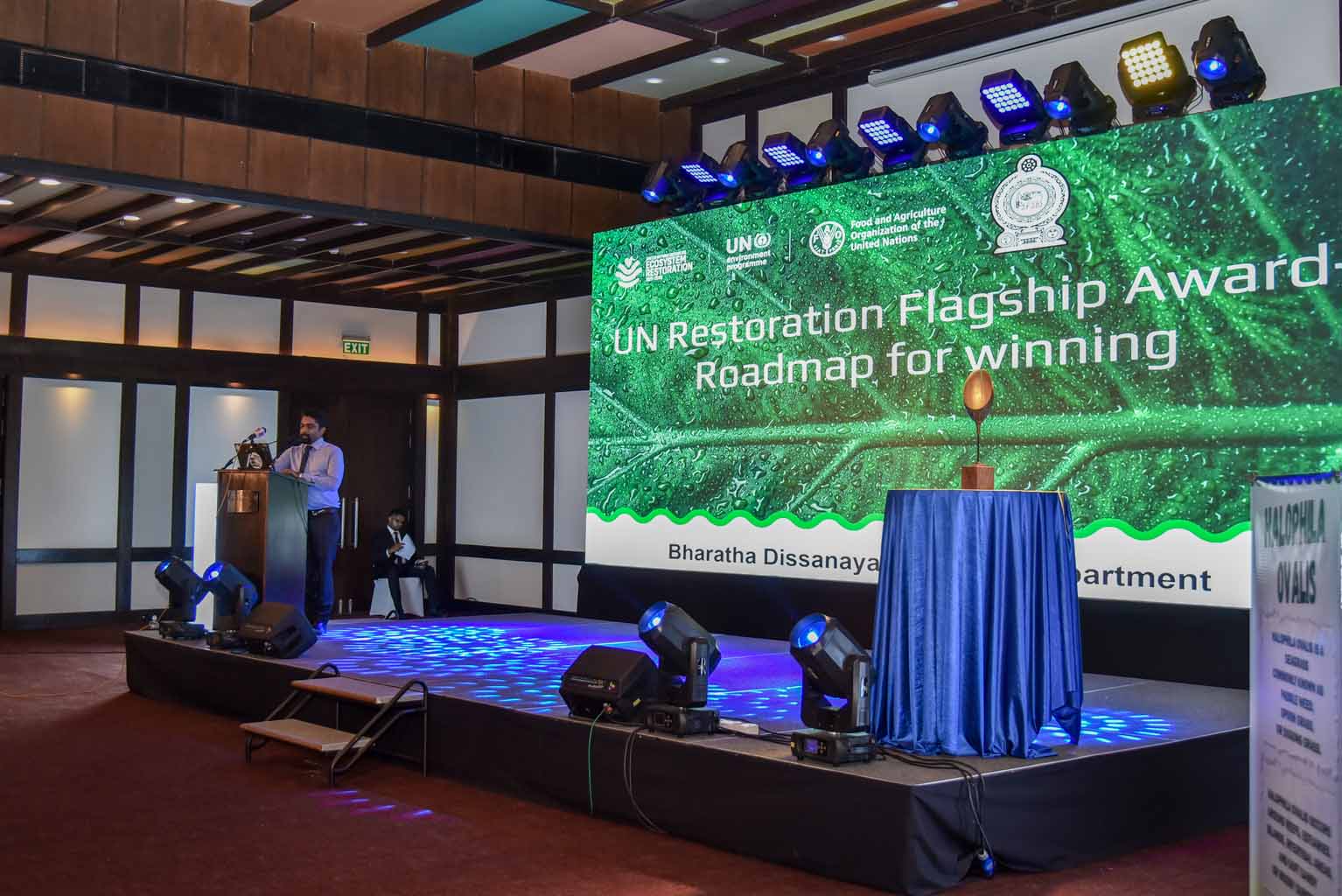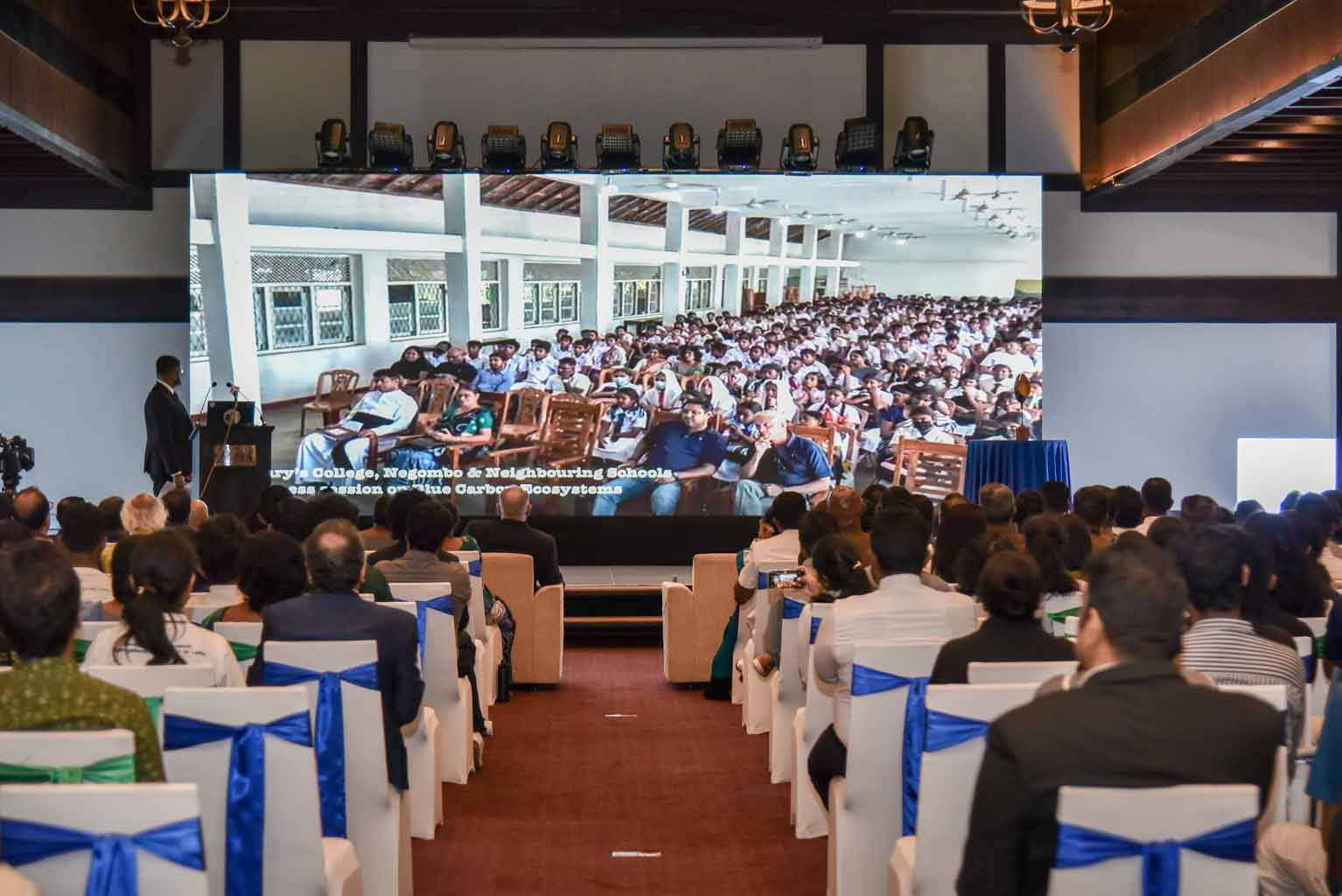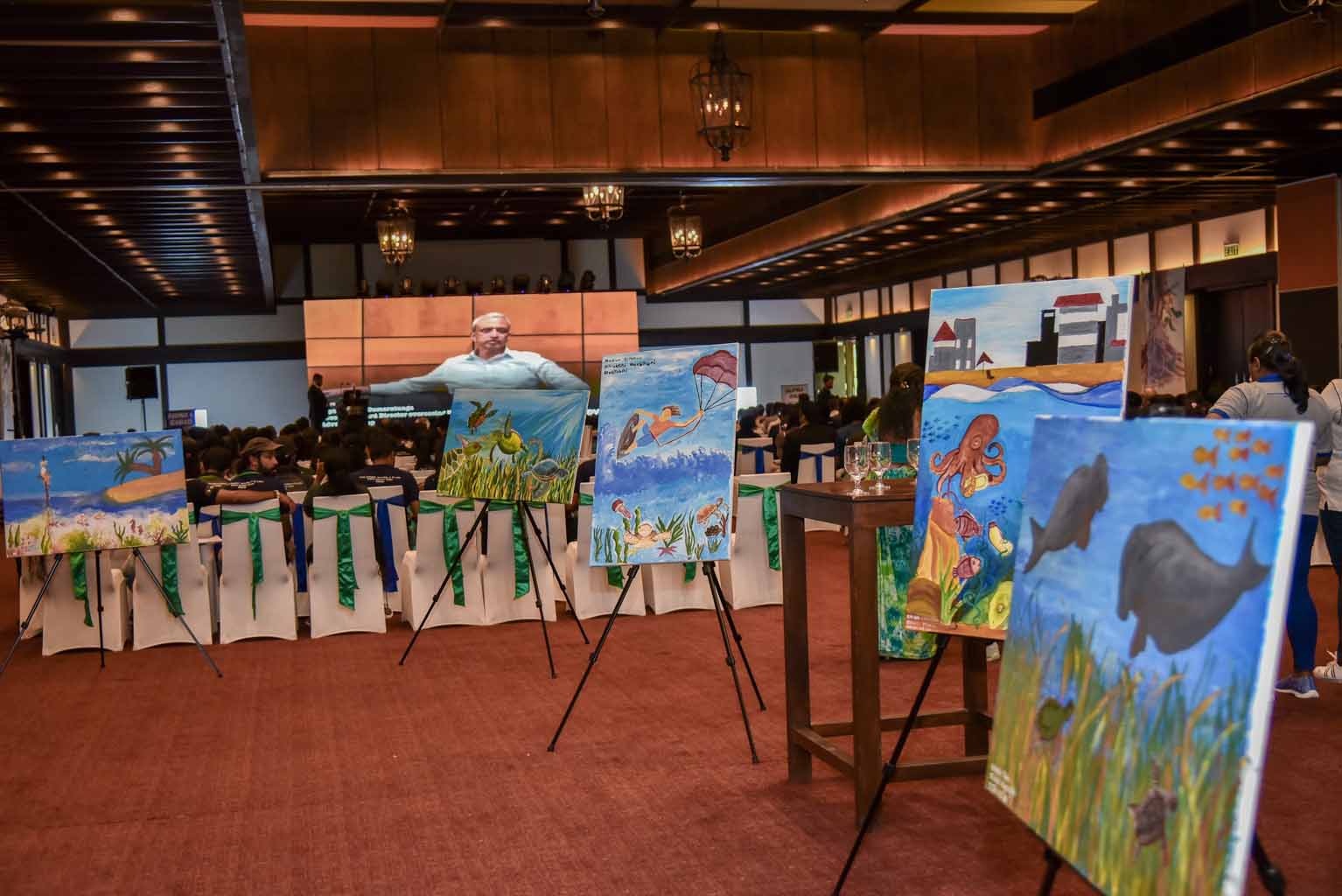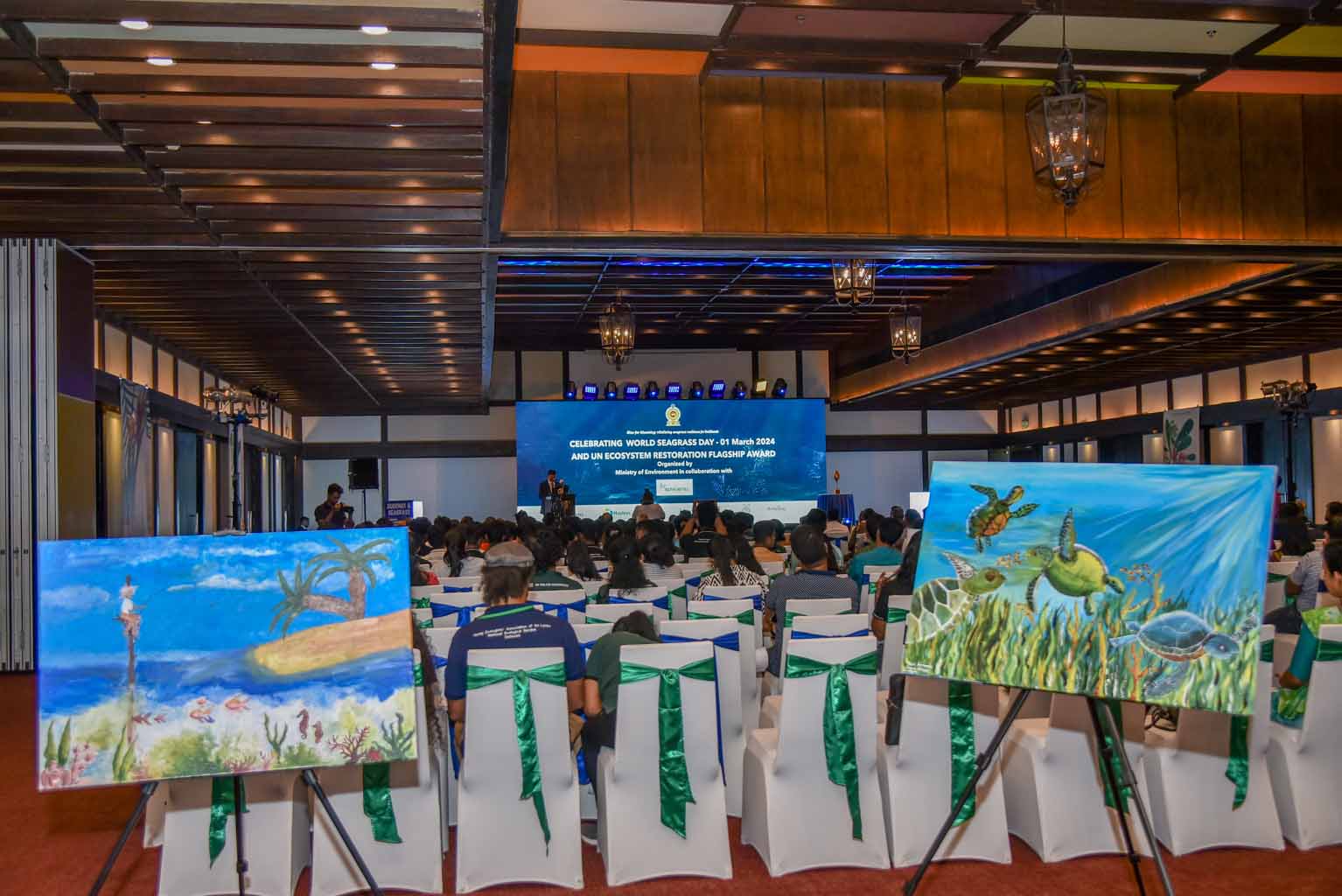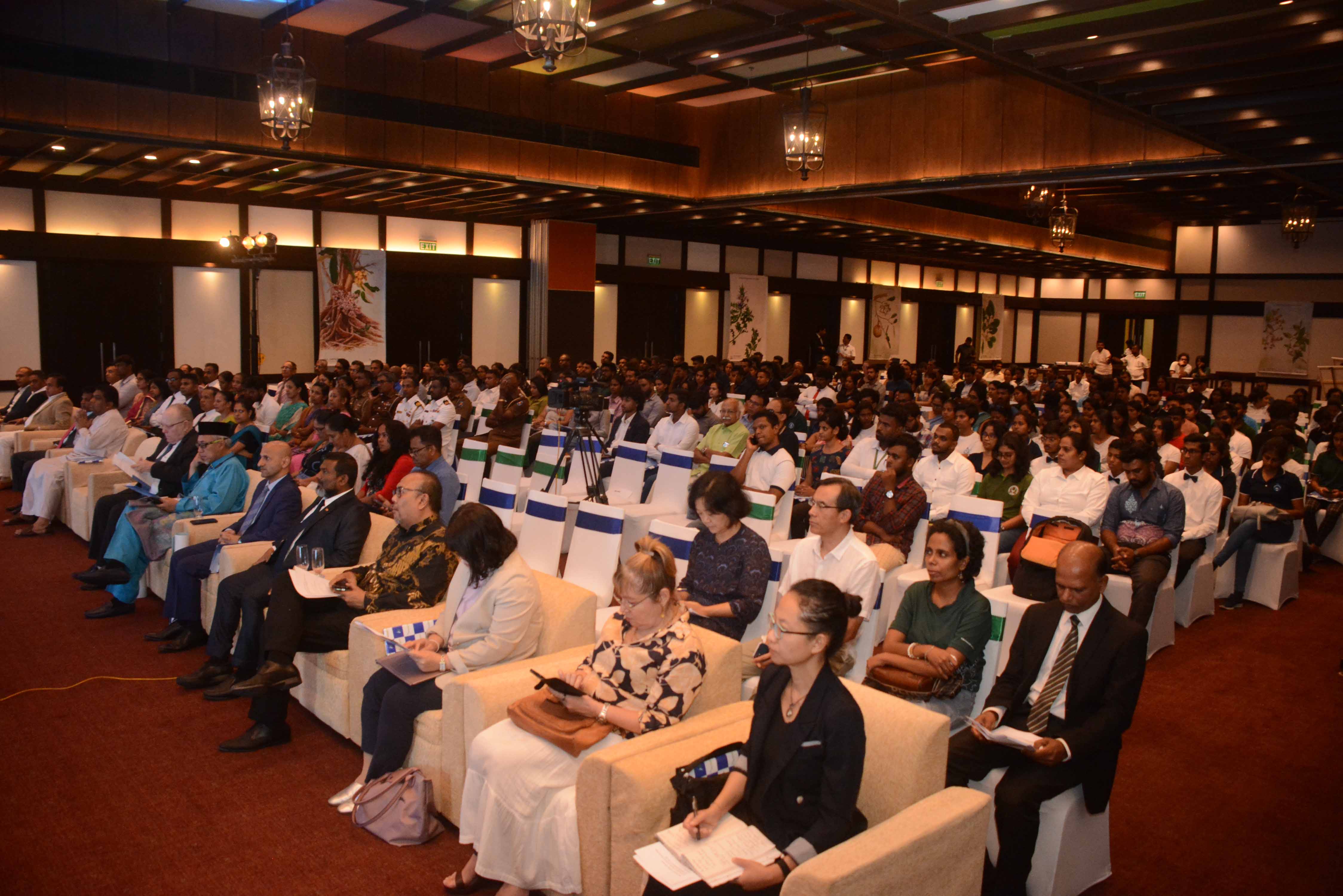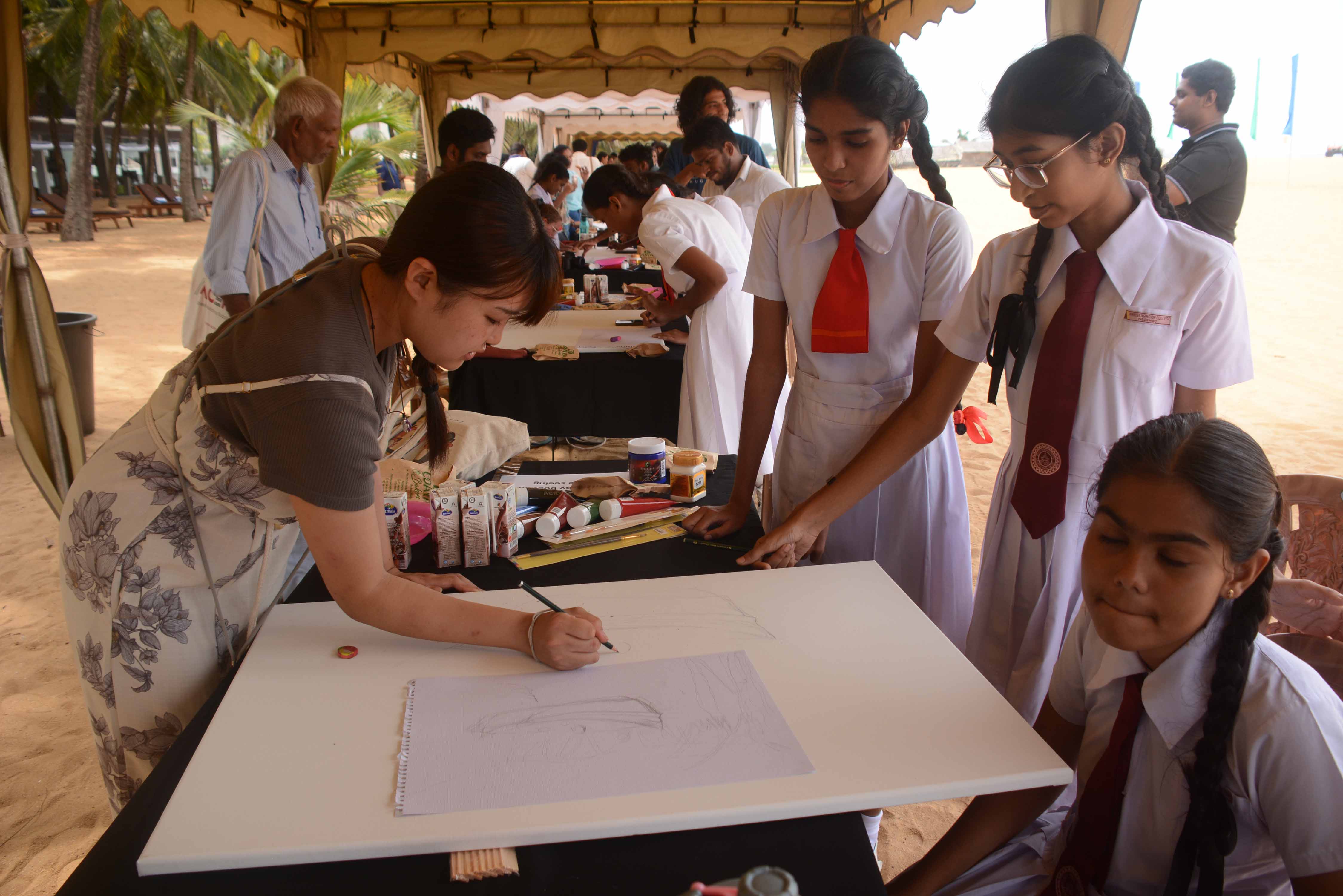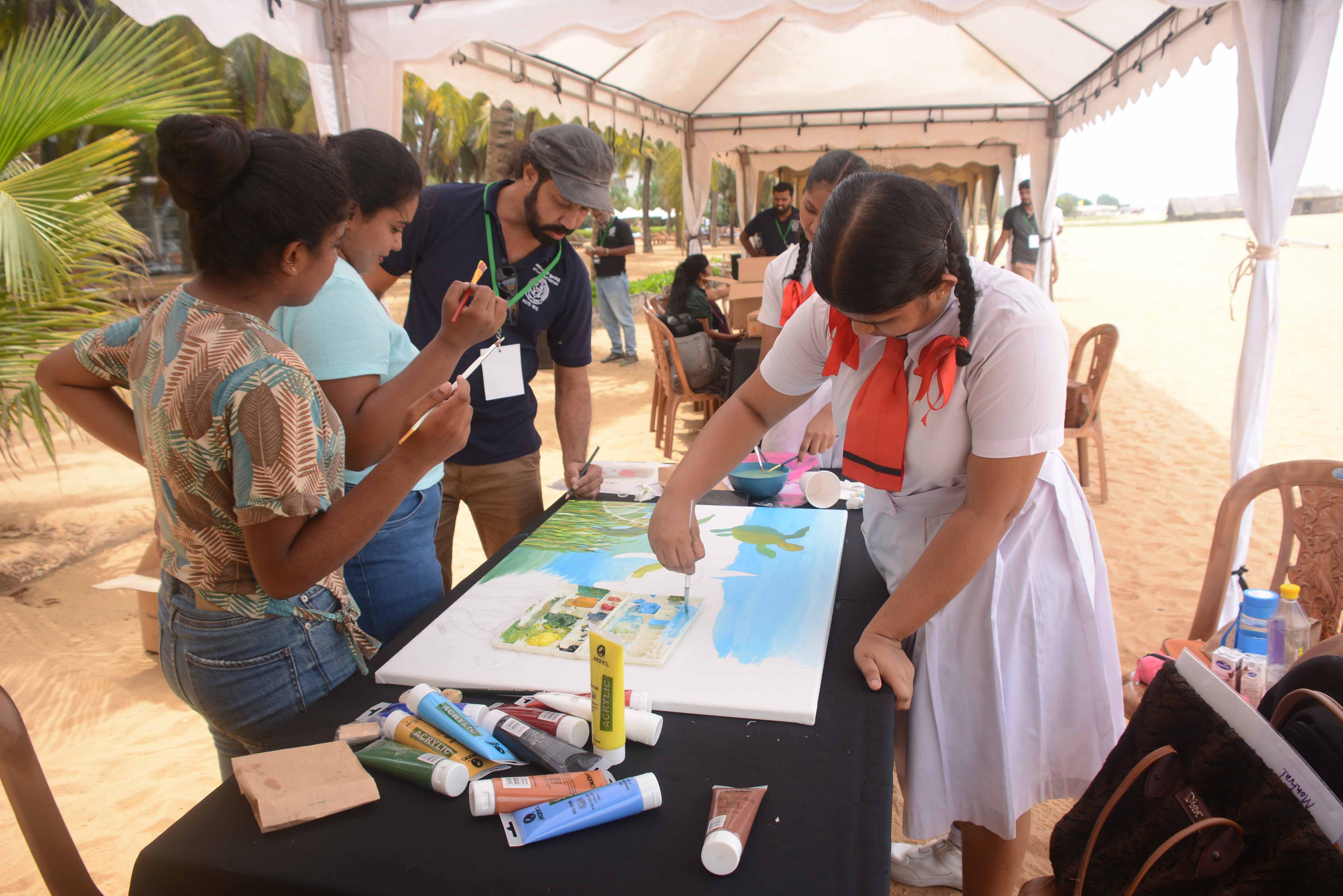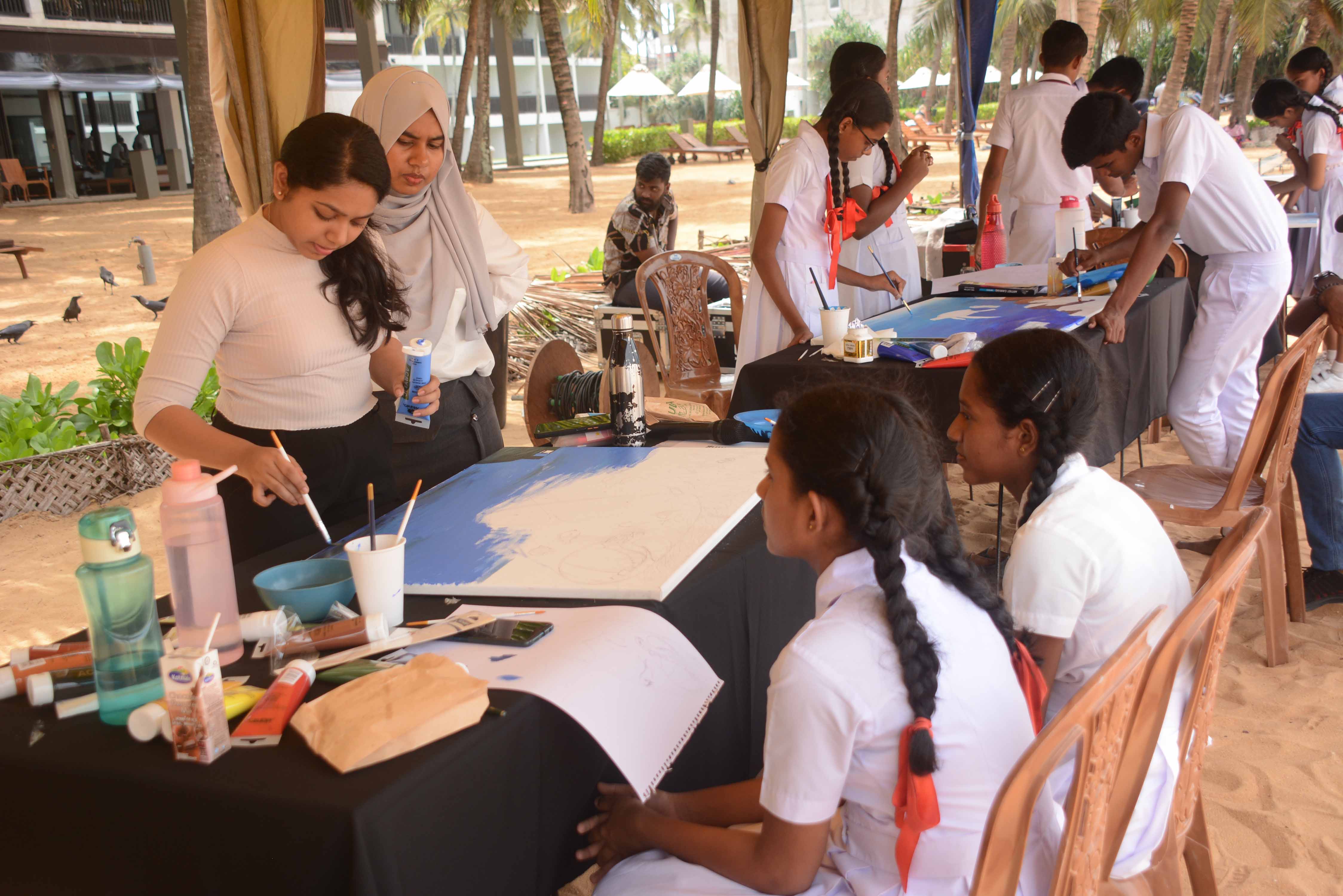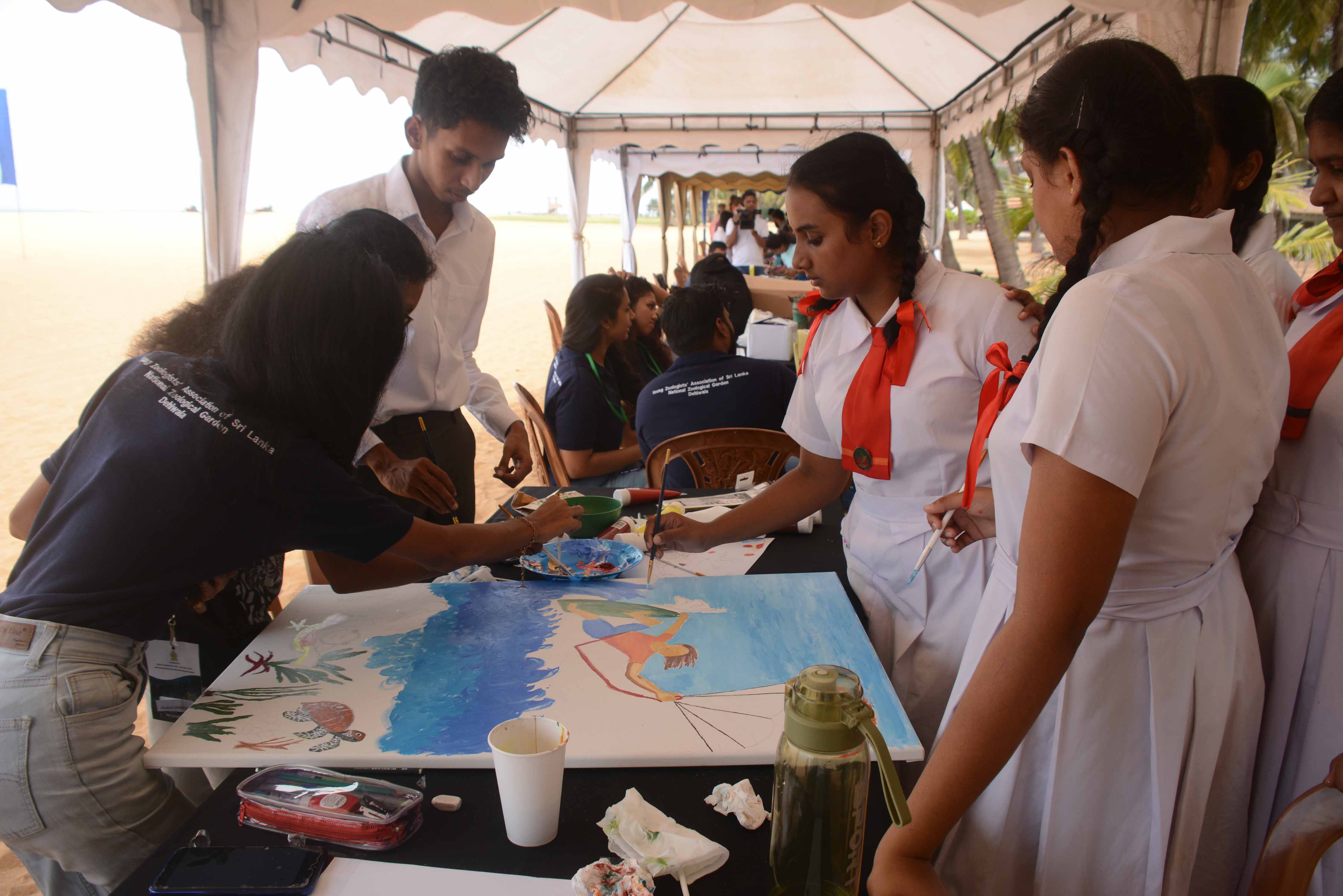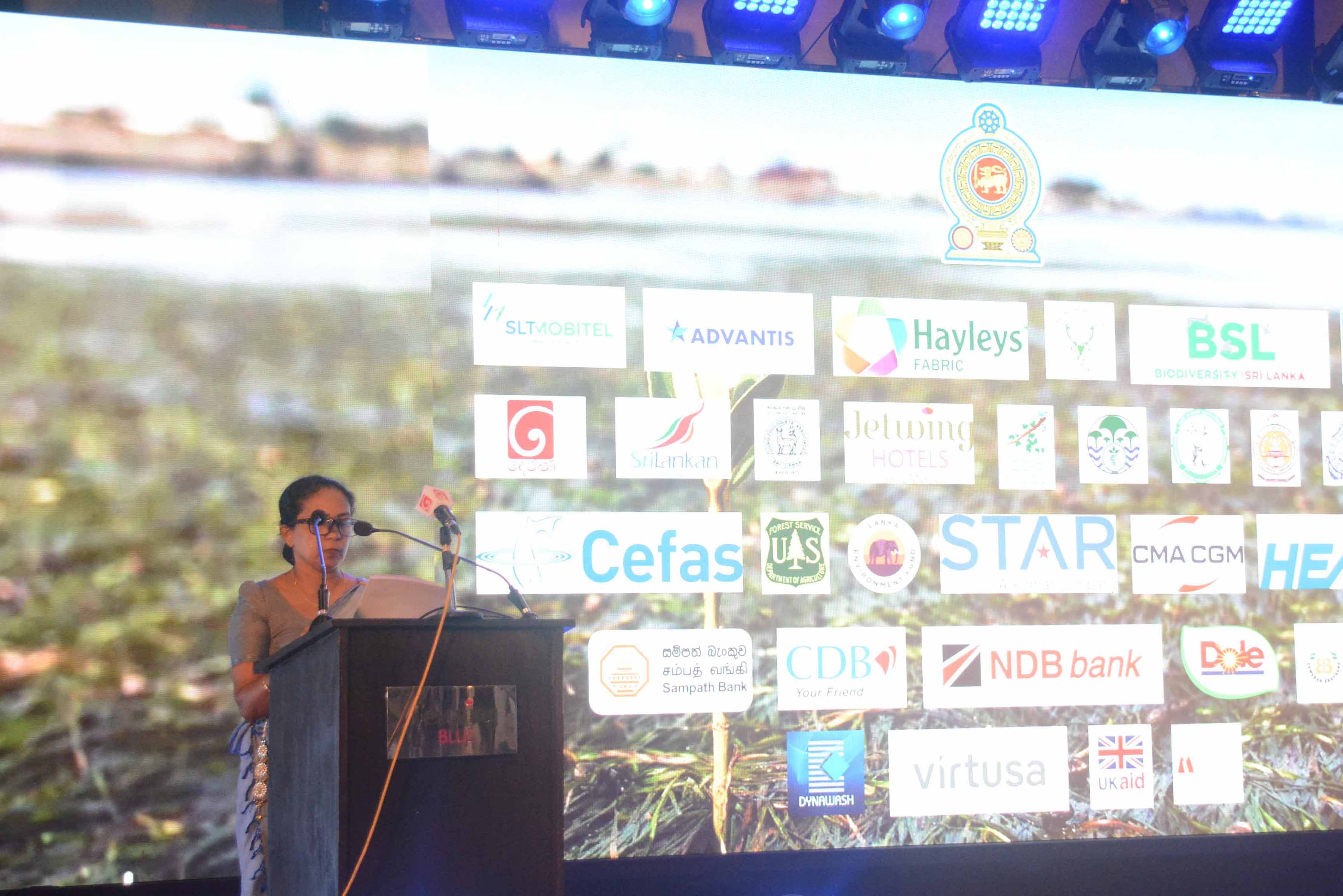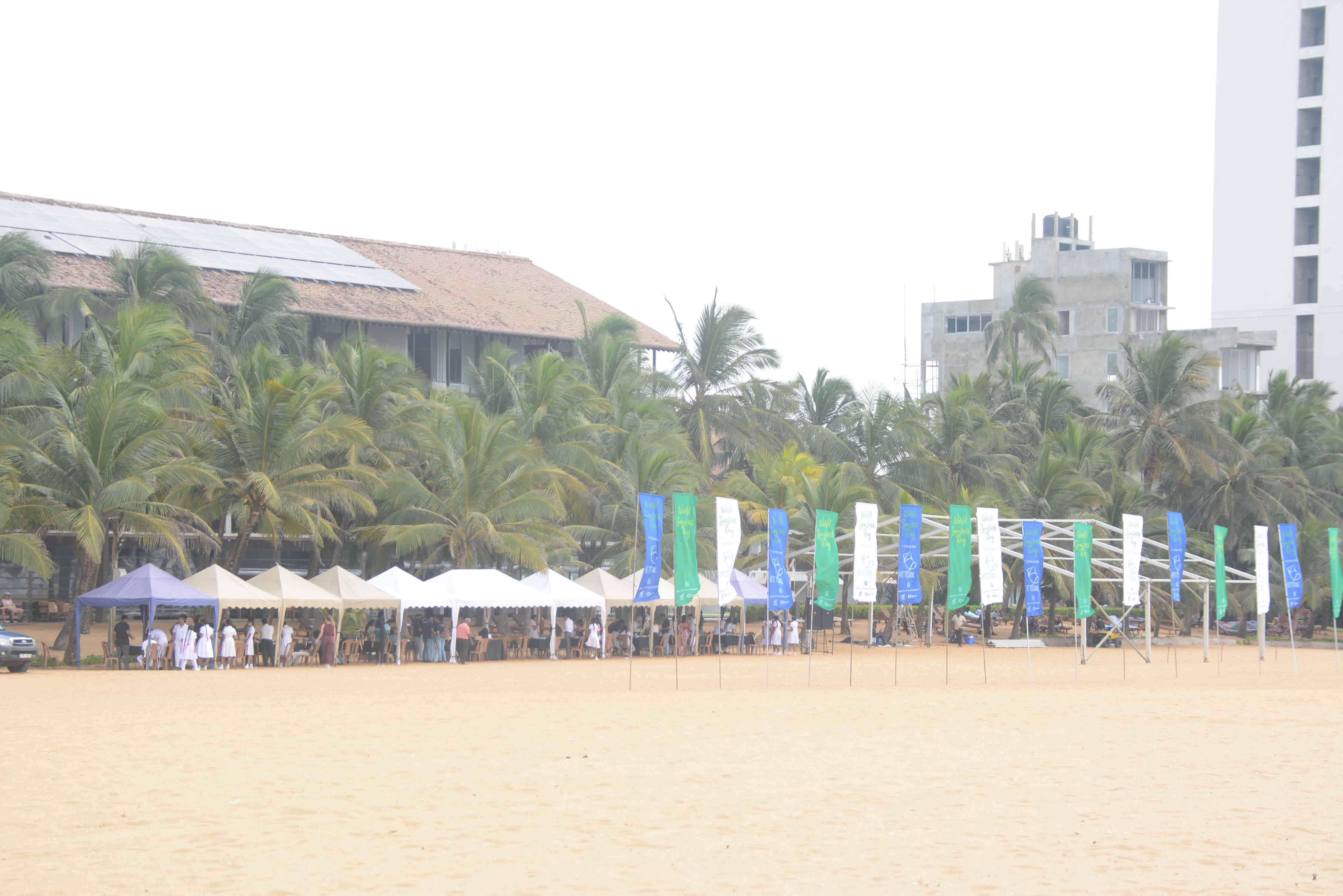Blue for blooming: vitalising seagrass resilience for livelihoods
Date: 1 March 2024
Venue: Jetwing Blue Hotel, Negombo
Time: 14:00 hrs. to 18:00 hrs.
Seagrasses are submerged flowering plants, similar to terrestrial plants, primarily found along coastlines from the tropics to the Arctic Circle, spanning across 159 countries. There are approximately 72 species of seagrasses worldwide, with six main habitats identified based on ecological characteristics. Among these, Sri Lanka is situated within the Indo-Pacific region, with approximately 15 recorded species within its waters. The region extending from Puttalam Lagoon to the Jaffna Peninsula is recognized as the most extensive area of seagrasses in Sri Lanka. This vast expanse of seagrass is conducive to supporting rare animal species, such as the sea cow (Dugong), due to the abundance of suitable habitat it provides.
The broken leaves visible on the surface of the water when approaching the sand islands near Talaimannar, Battalangunduwa, Nagadeepa and Delft Islandare indicative of seagrasses. These plants, characterized by their green leaves, thrive in areas with clear water. Furthermore, the Vidattaltivu area, designated as a nature reserve, encompasses both land and coastal regions. Notably, the coastal portion exceeds the landmass in size and is predominantly occupied by seagrass plants.
The services and functions provided by seagrasses to the environment are extensive, while their direct consumption is minimal. Considering the functions and services offered by seagrass, this ecosystem can be recognized as a unique ecosystem with ecological and economic value.
The ecosystem has been identified as a breeding ground and habitat for fish and invertebrates. Seagrasses account for 95% of the diet of highly threatened species such as sea pigs (Dugong) and green turtles (Green turtle). In addition to this, the ecosystem provides a variety of benefits, including nutrient recycling, water pollution reduction, and absorption of kinetic energy from tidal waves. Moreover, it plays a fundamental role in food chains and food webs, which are essential for maintaining the balance of life. The small-scale fishing industry, crucial for meeting global protein needs, relies heavily on seagrasses. According to researchers, seagrass species have been confirmed to sequester carbon at a rate approximately 30 times higher than tropical rainforests. Blue carbon reserves, primarily provided by seagrasses, constitute a significant portion of the world's carbon reserves.
Despite its value, the seagrass ecosystem faces serious threats from human activities, with an estimated loss of approximately 110 square kilometers annually since 1980.
Recognizing the importance of seagrass ecosystems, Sri Lanka presented a resolution to the United Nations General Assembly on May 23, 2022, designating March 1 of every year as World Seagrass Day.
In line with this, on 1st March 2024, the national event on commemoration of World Seagrass Day held at Jetwing Blue in Negombo under the patronage of the Hon. State Minister of Environment Mr. Janaka Wakkubura and the participation of Mr. Prabath Chandrakeerthi, Secretary to the Ministry of Environment under the theme of ‘Blue for Blooming: Vitalizing Seagrass Resilience for Livelihoods'. This event was graced by the presence of Hon. State Minister of Transport Mr. Lasantha Alagiyawanna, Hon. Member of Parliament Mr. Upul Mahendra Rajapaksa, foreign ambassadors, heads of stakeholder organizations, non-governmental organization officials, private sector officials, university students and representatives of environmental organizations.commitment to spotlighting and conserving this crucial ecosystem.
In addition to the main program, an art competition and a kite festival organized concurrently to enhance awareness about seagrass.
- Establishing a comprehensive national-level data system integrating seagrass information and involving both governmental and non-governmental entities in public awareness campaigns and conservation endeavors.
- Crafting a robust management strategy aimed at mitigating detrimental activities to the ecosystem, bolstering legislative measures, and delineating protected zones for seagrass preservation.
On March 1, during the national ceremony commemorating World Seagrass Day, Sri Lanka proudly recognized the World Restoration Flagship Award received at the United Nations Environment Conference held in Nairobi, Kenya, on February 27, 2024. This prestigious accolade from the United Nations acknowledges Sri Lanka's commendable and sustainable efforts in restoring crucial ecosystems, which serve as lifelines for numerous communities across the island.
Hence, Sri Lanka received this award in acknowledgment of its crucial endeavors at the national level to rejuvenate and preserve mangrove systems, which play a pivotal role in the country's ecosystem. This achievement stands as a distinctive milestone garnering international recognition within the conservation community. The award showcases globally relevant best practices and methodologies, serving as a blueprint for success worldwide, all while adhering to the United Nations Principles for Ecosystem Restoration. Sri Lanka's reception of this award marks a distinctive conservation milestone of unparalleled significance.
The main sponsor for the national event was SLT Mobitel, while other programs were supported by Hayley's Advantis, Hayley's Fabric, Wildlife Nature Protection Society, Blue Resources Trusts and Mass Intimates. The art competition was conducted under the guidance of the members of Young Zoologists Association of Sri Lanka.
